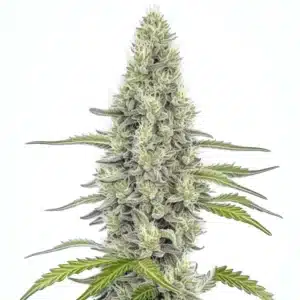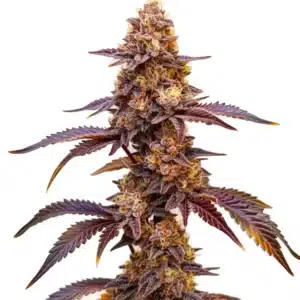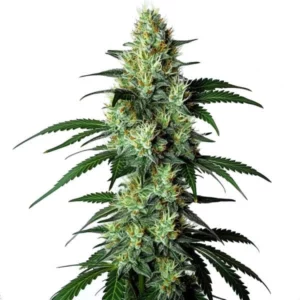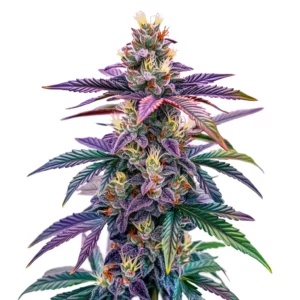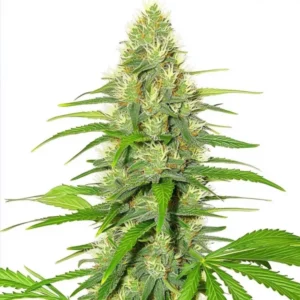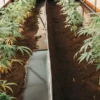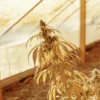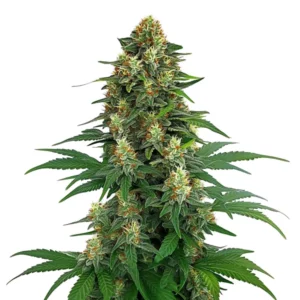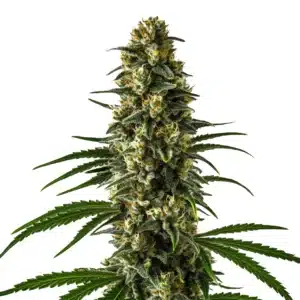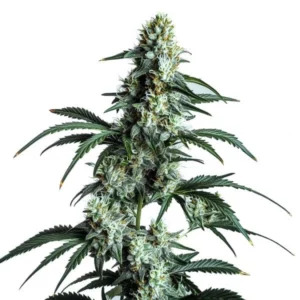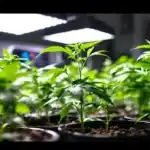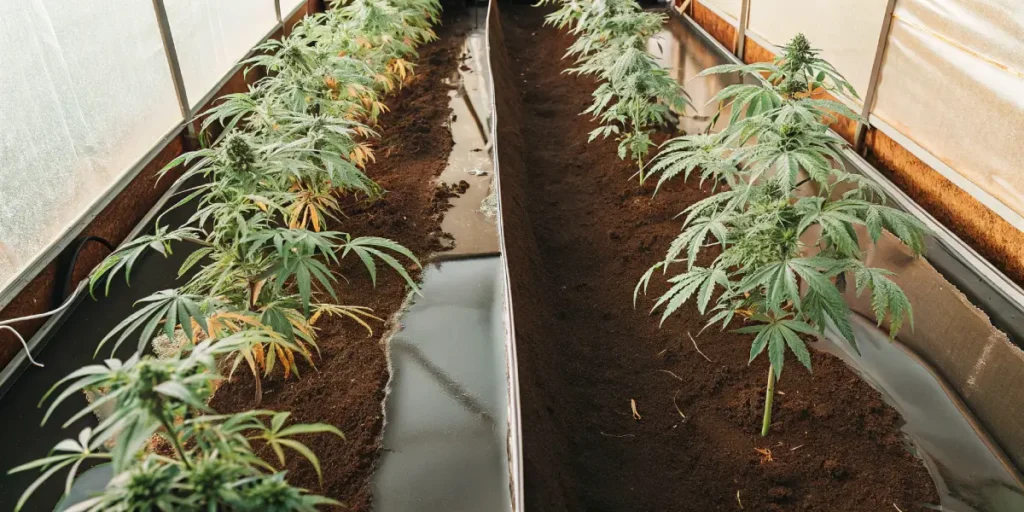
How to Identify Overwatering in Cannabis
Overwatering is a common challenge for both novice and experienced cannabis growers. Knowing how to identify overwatering in cannabis can save your plants from unnecessary stress. Overwatered plants often exhibit a range of symptoms that can be easily recognized if you know what to look for.
One of the clearest signs of overwatering cannabis plants is drooping leaves. While it might seem counterintuitive, too much water can prevent roots from getting the oxygen they need, leading to limp and lifeless foliage. If you notice your cannabis leaves sagging even when the soil is wet, it’s time to consider your watering habits.
Recommended Strains
Mazar
-
THC: 20%
-
Type of seed: Feminized
-
Phenotype: 10% Sativa / 90% Indica
-
Flavor: Skunk, Sweet, Woody
-
Day to flower: 8 - 10 weeks
Dark Star Auto
-
THC: 18% - 22%
-
Type of seed: Autoflowering
-
Phenotype: 15% Sativa / 85% Indica
-
Flavor: Earthy, Pine, Skunk, Sweet
-
Life cycle of: 8 - 10 weeks
Another symptom of overwatering in marijuana plants is yellowing leaves. This is often mistaken for nutrient deficiency, but it can actually be caused by excessive waterlogged soil. Roots that are constantly submerged can’t absorb nutrients effectively, leading to discoloration in the leaves.
Recognizing Overwatered Cannabis Leaves
When learning how to identify overwatering in cannabis, keep an eye on the color and texture of the leaves. Overwatered cannabis leaves often turn a pale yellow or even develop brown spots. This discoloration is a direct result of the plant struggling to draw nutrients from waterlogged roots.
The texture of the leaves can also give you clues. Leaves affected by overwatering might feel soft and delicate, rather than firm and healthy. This is due to cells being engorged with water, making them weak and prone to damage.
Besides to visual cues, the leaf structure may weaken over time, leading to tears or cracking. This occurs because the plant’s cells are under stress from excessive moisture, making them more susceptible to physical harm. Observing these symptoms of overwatering in marijuana plants can help you act quickly to rectify the issue.
Recognizing these changes early is crucial for maintaining plant health. By identifying overwatered cannabis leaves promptly, you can adjust your watering routine and improve plant resilience. Regularly inspecting your plants will ensure you catch any signs of overwatering cannabis plants before they escalate into more severe problems.
Diagnosing Overwatered Cannabis Problems
If you’re trying to diagnose overwatered cannabis problems, start by checking the soil. Gently dig a few inches into the soil with your finger. If it feels soggy and lacks aeration, your plant is likely suffering from too much water. Proper drainage is crucial for healthy roots.
Consider the pot size and material as well. Cannabis grown in pots that are too large or made of non-porous materials like plastic can retain too much moisture, exacerbating the overwatering issue. Ensure your pots have adequate drainage holes to allow excess water to escape.
Additionally, the location of your cannabis plants can influence moisture levels. Plants kept in areas with poor airflow or high humidity are more prone to overwatering issues. Improving ventilation and placing plants in a sunnier spot can help balance moisture levels.
It’s also beneficial to inspect the root system when diagnosing overwatered cannabis problems. Healthy roots should be white and firm, while overwatered plants may have roots that appear brown and mushy. This can indicate the early stages of root rot, a serious condition that requires immediate attention.
Promos & Deals
Practical Tips to Prevent Overwatering
Preventing overwatering begins with knowing your plant’s water needs. Cannabis plants have different requirements depending on their growth stage. Seedlings need less water compared to flowering plants. Adjust your watering schedule accordingly.
Use a moisture meter to gauge the humidity levels in your soil. This tool can help you avoid overwatering by letting you know when it’s genuinely time to water again. Alternatively, lift the pot to feel its weight; a lighter pot usually means it’s time to water.
Monitoring weather conditions can also aid in preventing overwatering. During rainy or humid periods, reduce watering frequency to compensate for the natural increase in moisture. Conversely, in dry spells, you might need to water more frequently.
Avoiding overwatering is also about observing plant behavior. Plants that seem to struggle despite optimal conditions might have root issues or other underlying problems. By learning how to tell if cannabis is overwatered, you can take corrective measures early and ensure a healthier growing environment.
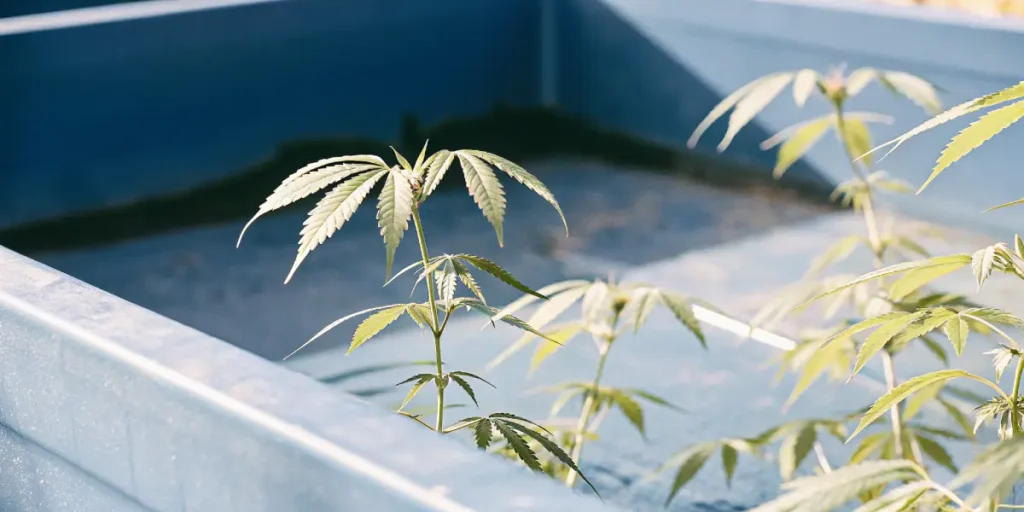
Optimizing Watering Techniques
Watering techniques can make a huge difference. Instead of watering a little every day, give your plants a thorough soaking less frequently. This encourages deeper root growth and prevents the surface soil from staying constantly wet.
Pay attention to environmental factors like temperature and humidity. Higher temperatures and lower humidity levels often require more frequent watering, whereas cooler, more humid environments might necessitate less. Adjust your approach based on these conditions.
Implementing a drip irrigation system can offer more precise control over water delivery. This method helps ensure that plants receive consistent moisture levels without the risk of waterlogging, especially useful in larger grow operations.
Timing is also important in optimizing watering techniques. Watering in the morning allows plants to absorb moisture before the heat of the day, reducing evaporation and ensuring better hydration. By knowing how to identify overwatering in cannabis, you can refine your watering practices to better suit your plant’s needs.
- Observe the leaves for drooping and yellowing.
- Check soil moisture with a finger test or moisture meter.
- Ensure pots have adequate drainage holes.
- Consider environmental factors like temperature and humidity.
- Adjust watering frequency based on plant growth stages.
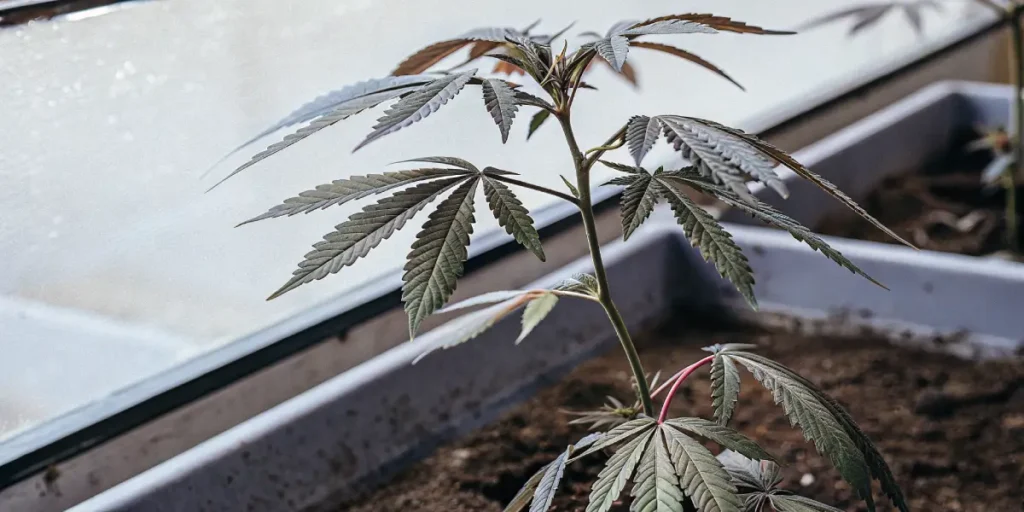
FAQs
What are the early signs of overwatering cannabis plants?
Early signs of overwatering cannabis plants include drooping leaves and a generally wilted appearance. These symptoms occur because excess water deprives the roots of oxygen, leading to stress. If left unchecked, overwatered plants may also start to show signs of nutrient deficiencies, such as yellowing leaves.
It’s essential to act quickly once you notice these signs. Reducing the frequency of watering and ensuring proper drainage can help alleviate the stress on your plants. Remember, it’s easier to recover from under-watering than overwatering, so when in doubt, wait a day before the next watering.
Another early indicator is the appearance of algae or mold on the soil surface, which thrives in consistently damp conditions. This can further stress the plant by competing for nutrients and should be addressed by allowing the soil to dry out.
Recognizing these early signs of overwatering cannabis plants can prevent more severe issues from developing. By adjusting your care routine at the first hint of trouble, you can maintain healthier plants and improve your overall growing success.
How can you tell if your cannabis is overwatered?
One way to tell if cannabis is overwatered is by examining the leaves. Overwatered cannabis leaves often appear weak and may develop yellow or brown spots. Additionally, the overall plant may look droopy, even though the soil is wet.
Another method is to check the soil’s moisture level. If the soil feels consistently damp and sticky, it’s a sign that you might be watering too frequently. Adjust your watering schedule and make sure your pots have adequate drainage to prevent water from accumulating at the bottom.
Observing the growth rate can also provide clues. Stunted growth or a sudden halt in development can indicate that the plant’s roots are overwhelmed by water. Healthy plants should show consistent growth unless environmental conditions change dramatically.
By knowing how to tell if cannabis is overwatered, you can make informed decisions about adjusting your watering practices. This knowledge helps prevent long-term damage and supports a more robust growing process.
What are some symptoms of overwatering in marijuana plants?
Symptoms of overwatering in marijuana plants include drooping, yellowing leaves, and a stunted growth rate. When roots are submerged in water for extended periods, they can’t access oxygen, leading to these visible symptoms.
In severe cases, overwatering can lead to root rot, a condition where roots begin to decay due to lack of oxygen. If you suspect root rot, it might be necessary to repot the plant in fresh soil and cut away any affected roots to prevent further damage.
Root rot is often accompanied by a foul odor coming from the soil, indicating decay. This is a critical symptom that requires immediate action to save the plant from further harm.
Learning to identify these symptoms of overwatering in marijuana plants can empower you to take timely corrective measures. A proactive approach to plant care will enhance growth and yield, ensuring a successful cultivation experience.
How do you identify overwatered cannabis leaves?
Identifying overwatered cannabis leaves involves observing their color and texture. Overwatered leaves typically become soft, limp, and may turn yellow or develop brown spots. These changes indicate that the plant is struggling to access nutrients due to waterlogged conditions.
Healthy cannabis leaves should be vibrant, firm, and free of discoloration. If you notice any of these symptoms, it’s a clear indication that you need to reassess your watering practices and possibly allow the soil to dry out more between waterings.
Over time, the edges of the leaves may curl or become brittle, suggesting that the plant is under stress from excess moisture. Addressing these issues promptly can prevent further damage and promote recovery.
By routinely checking for these signs and knowing how to identify overwatered cannabis leaves, you can maintain better control over your plant’s health. This vigilance is a key factor in successful cannabis cultivation.
What are some strains that are less susceptible to overwatering?
Some cannabis strains are naturally more resilient to overwatering. Strains like Girl Scout Cookies, Mamba Negra, and Tangie from Blimburn Seeds are known for their hardiness and can withstand slight variations in watering practices without showing immediate stress symptoms.
These strains are ideal for growers who might be prone to overwatering. They offer a bit more leeway, allowing you to perfect your watering techniques while still producing a healthy and robust plant.
Choosing resilient strains can provide a buffer as you refine your growing skills. Their ability to adapt to less-than-ideal conditions makes them a practical choice for both new and seasoned growers facing challenges with moisture control.
By selecting strains that tolerate moisture fluctuations well, you can focus on improving other aspects of your cultivation practice. Knowing how to identify overwatering in cannabis, combined with the right strain choice, can lead to a more rewarding growing experience.

